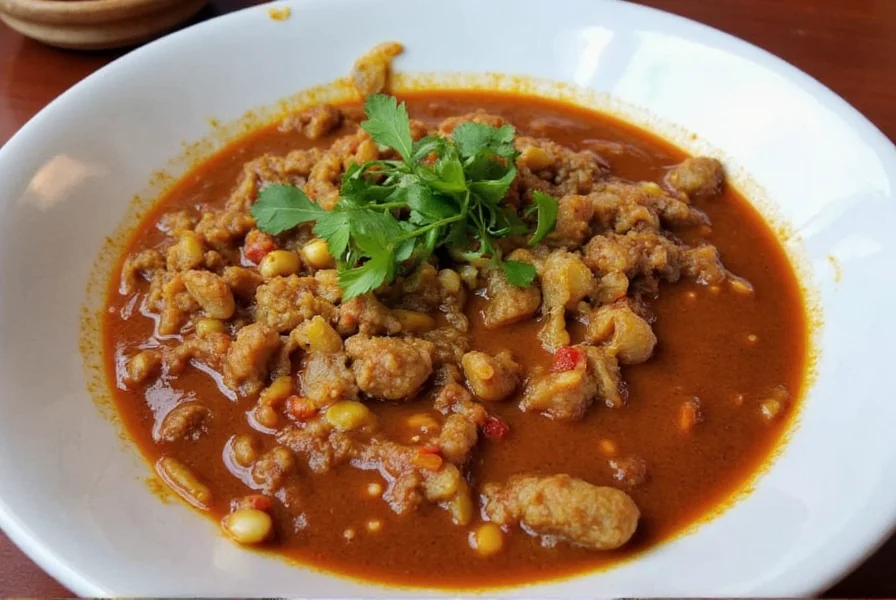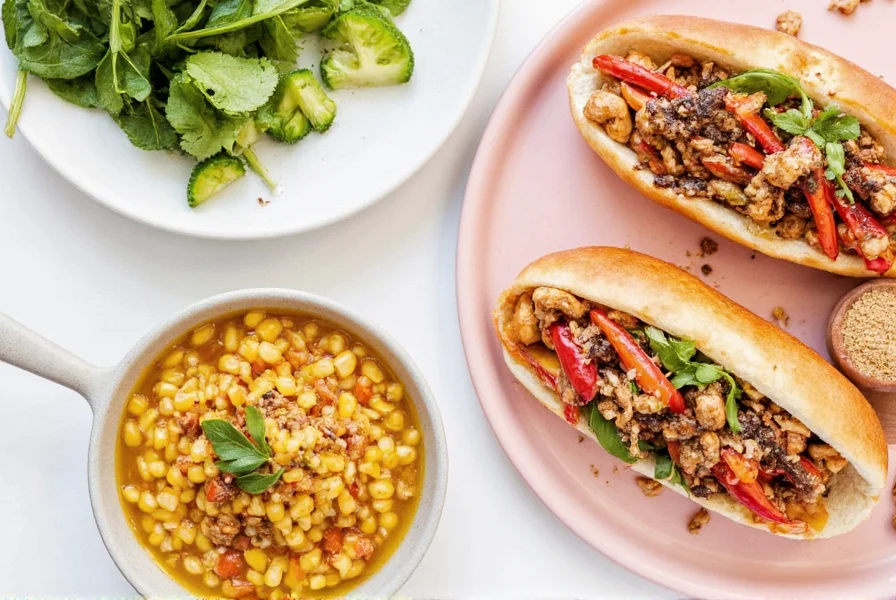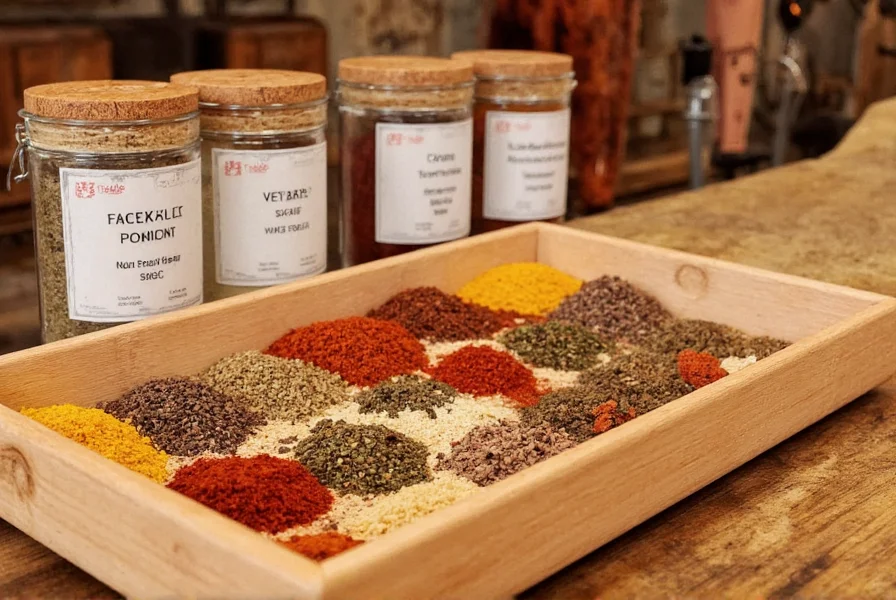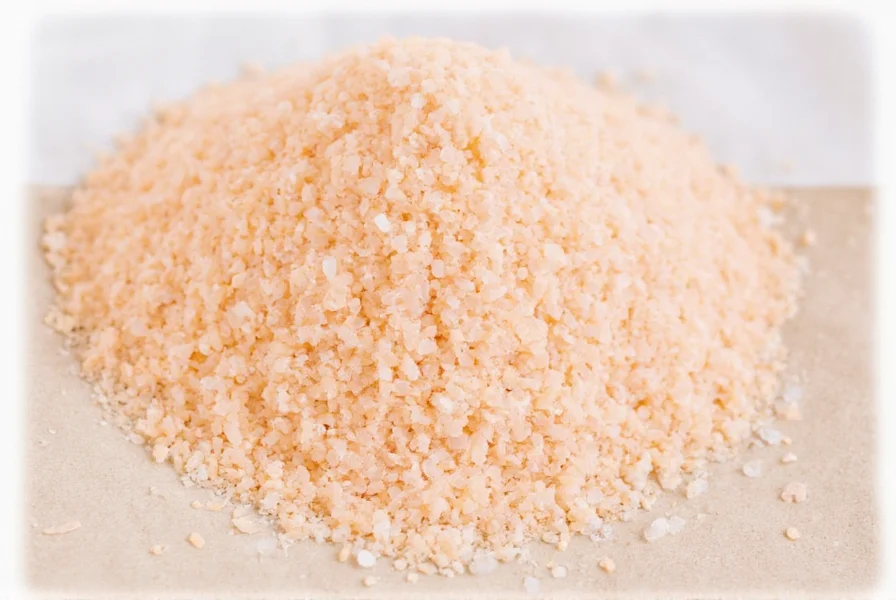Table of Contents
Introduction to Spices and Herbs
Spices and herbs are the essential building blocks of global cuisine, transforming ordinary meals into extraordinary culinary experiences. Unlike common misconceptions, these ingredients aren't just about adding heat or sweetness—they're complex flavor architects that define regional cooking traditions and elevate everyday dishes. This comprehensive guide provides detailed, actionable information about the most important spices and herbs, including their origins, flavor characteristics, culinary applications, and expert usage tips.
The Ultimate List of Spices and Herbs
Below is a meticulously curated list of 30+ essential spices and herbs, categorized by type and origin. Each entry includes detailed information to help you understand their unique characteristics and optimal applications:
| Spice/Herb | Type | Origin | Flavor Profile | Best Culinary Uses |
|---|---|---|---|---|
| Cumin | Spice (seed) | Eastern Mediterranean | Earthy, nutty, smoky with warm undertones | Mexican chili, Indian curries, Middle Eastern falafel, roasted vegetables |
| Paprika | Spice (dried pepper) | Central Europe | Smoky, sweet, mild to hot depending on variety | Spanish paella, Hungarian goulash, deviled eggs, seasoning rubs |
| Oregano | Herb (leaves) | Mediterranean | Earthy, pungent, slightly bitter with minty notes | Italian tomato sauces, Greek salads, Mexican taco seasoning, pizza toppings |
| Basil | Herb (leaves) | Asia | Fresh, sweet, peppery with hints of anise | Italian pesto, Caprese salads, Thai curries, Vietnamese pho garnish |
| Garlic | Vegetable (bulb) | Central Asia | Pungent raw, mellow and sweet when roasted | French aioli, Chinese stir-fries, Italian pasta sauces, roasted meat rubs |
| Ginger | Root | South Asia | Sharp, spicy, slightly sweet with citrusy notes | Asian stir-fries, gingerbread, chai tea, marinades for seafood |
| Cinnamon | Spice (bark) | Sri Lanka | Sweet, warm, woody with subtle floral notes | Apple pies, Mexican hot chocolate, Moroccan tagines, oatmeal toppings |
| Coriander | Seed | Mediterranean | Lemony, citrusy, slightly floral with nutty undertones | Indian curries, Middle Eastern falafel, Mexican salsas, pickling brines |
| Thyme | Herb (leaves) | Mediterranean | Mild, earthy, slightly minty with floral undertones | French bouquet garni, roasted chicken, mushroom sauces, tomato-based dishes |
| Chili Powder | Spice blend | Mexico | Spicy, smoky, slightly sweet with cumin notes | Tex-Mex chili, taco seasoning, barbecue rubs, roasted potatoes |
| Turmeric | Spice (root) | South Asia | Earthy, slightly bitter, mustard-like with warm notes | Indian curries, golden milk, rice dishes, roasted vegetable seasoning |
| Nutmeg | Spice (seed) | Indonesia | Warm, sweet, nutty with hints of cinnamon and clove | Pumpkin pie, béchamel sauce, baked goods, spiced hot chocolate |
| Cloves | Spice (flower buds) | Indonesia | Intensely sweet, warm, slightly bitter with minty notes | Mulled wine, ham glazes, Indian biryani, spice cakes |
| Cardamom | Spice (seed pods) | India | Floral, citrusy, sweet with eucalyptus notes | Indian chai, Scandinavian baked goods, Middle Eastern coffee, rice dishes |
| Fennel Seeds | Spice (seed) | Mediterranean | Sweet, licorice-like with herbal notes | Italian sausage, Indian curries, roasted vegetables, digestive teas |
| Bay Leaves | Herb (leaves) | Mediterranean | Earthy, floral, slightly minty with subtle bitterness | French stocks, stews, soups, rice dishes, pickling brines |
| Parsley | Herb (leaves) | Eastern Mediterranean | Fresh, grassy, slightly peppery | Greek tabbouleh, French gremolata, garnishes, chimichurri sauce |
| Cilantro | Herb (leaves) | Mediterranean | Citrusy, bright, slightly soapy (for some palates) | Mexican salsas, Thai curries, Vietnamese pho, Middle Eastern tabbouleh |
| Rosemary | Herb (leaves) | Mediterranean | Piney, woody, slightly lemony | Roasted meats, focaccia bread, potato dishes, infused oils |
| Sage | Herb (leaves) | Mediterranean | Earthy, peppery, slightly minty with camphor notes | Thanksgiving stuffing, brown butter sauces, pork dishes, tea |
| Black Pepper | Spice (berry) | India | Pungent, sharp, slightly floral with heat | Universal seasoning, steak rubs, salad dressings, pepper sauces |
| Red Pepper Flakes | Spice blend | Italy | Hot, fruity, slightly smoky | Pasta dishes, pizza toppings, marinades, spicy soups |
| Saffron | Spice (stigma) | Greece | Floral, honey-like, slightly metallic | Spanish paella, Iranian saffron rice, French bouillabaisse, desserts |
| Sumac | Spice (berries) | Middle East | Citrusy, tart, slightly fruity with astringent notes | Middle Eastern salads, grilled meats, hummus, avocado toast topping |
| Smoked Paprika | Spice (dried pepper) | Spain | Deep smoky, sweet, mild heat | Barbecue rubs, Spanish chorizo, deviled eggs, roasted vegetables |
| Curry Powder | Spice blend | India | Complex, earthy, warm with turmeric and cumin notes | Indian curries, roasted vegetables, marinades, soup bases |
| Garam Masala | Spice blend | India | Warm, sweet, floral with cinnamon and cardamom notes | Indian curries, lentil dishes, roasted meats, rice pilafs |
| Star Anise | Spice (fruit) | China | Intensely sweet, licorice-like with warm notes | Chinese five-spice, pho broth, mulled wine, baked goods |
| Fenugreek | Spice (seed) | India | Bitter, maple-like, nutty with caramel notes | Indian curries, Ethiopian berbere, pickling brines, spice blends |
| Mustard Seeds | Spice (seed) | Europe | Pungent, sharp, nutty when toasted | Indian pickles, French Dijon mustard, pickling brines, salad dressings |
| Vanilla | Spice (pod) | Mexico | Sweet, creamy, floral with woody notes | Baked goods, custards, ice cream, coffee, desserts |
| Lemongrass | Herb (stems) | South Asia | Citrusy, grassy, slightly floral with lemon notes | Thai curries, Vietnamese soups, marinades, herbal teas |

Flavor Profiles and Culinary Uses
Understanding how spices and herbs interact with different ingredients and cooking techniques is essential for creating balanced dishes. Below are detailed culinary applications for key ingredients:
- Cumin: Toast whole seeds before grinding to release maximum flavor. Essential in Mexican chili and Indian curries. Pairs exceptionally well with coriander, chili powder, and garlic. For vegetarian dishes, use cumin to add depth to roasted vegetables and lentils.
- Turmeric: Always pair with black pepper to enhance absorption of curcumin. Creates vibrant yellow color in rice dishes and curries. Best used in warm dishes as heat activates its flavor compounds. Avoid overcooking to prevent bitterness.
- Saffron: Steep threads in warm liquid for 10 minutes before adding to dishes. Use sparingly—just a few threads can flavor an entire pot of paella. Perfect for seafood dishes, risottos, and sweet baked goods like saffron buns.
- Sumac: Sprinkle on finished dishes for bright acidity. Excellent on grilled meats, roasted vegetables, and avocado toast. Creates a tangy alternative to lemon juice in Middle Eastern salads like fattoush.
- Garam Masala: Add toward the end of cooking to preserve delicate aromatics. Use in marinades for meats and vegetables. Creates complex flavor in lentil dishes and roasted cauliflower. Store in airtight container away from light to maintain potency.
- Lemongrass: Bruise stalks before using to release oils. Remove tough outer layers before chopping. Ideal for Thai curries and Vietnamese pho. Infuse in hot water for refreshing herbal tea.
- Fenugreek: Toast seeds to reduce bitterness. Essential in Ethiopian berbere spice blend. Creates unique maple-like flavor in baked goods and savory dishes. Use sparingly as it can overpower other flavors.
- Mustard Seeds: Temper in hot oil to release nutty flavor. Perfect for Indian tadka (tempering) technique. Use in pickling brines for crisp pickles. Whole seeds add texture to breads and crackers.
- Vanilla: Use whole pods for maximum flavor—split and scrape seeds into recipes. Infuse in milk or cream for custards and ice cream. Vanilla extract is convenient but lacks the complexity of whole pods.

Buying Guide: How to Choose the Right Spices and Herbs
Understanding Spice Types and Sources
Spices come from various plant parts: seeds (cumin, coriander), bark (cinnamon), roots (ginger, turmeric), flowers (saffron), and fruits (peppercorns). Herbs are typically leafy parts (basil, parsley) or stems (lemongrass). Understanding these distinctions helps you make informed purchasing decisions.
Quality Indicators
- Color: Vibrant hues indicate freshness. Faded brown turmeric or dull red paprika suggests age.
- Aroma: Fresh spices should have strong, pleasant scents. Cinnamon should smell sweet and woody, not musty.
- Texture: Ground spices should be fine and uniform. Whole spices should feel dry and not sticky.
- Source: Look for brands that specify origin (e.g., Ceylon cinnamon from Sri Lanka). Reputable spice companies often provide harvest dates.
Purchasing Strategy
For frequently used spices (black pepper, garlic powder), buy ground versions for convenience. For less common spices (saffron, sumac), purchase whole forms when possible and grind as needed. Store spices in airtight glass containers away from heat and light. Replace ground spices every 6-12 months and whole spices every 2-3 years.
Specialty Spices Guide
- Saffron: Look for deep red threads with minimal yellow stems. The highest quality saffron is labeled "coupe" grade.
- Ceylon Cinnamon: Look for thin, layered bark that crumbles easily. It has a sweeter, more delicate flavor than common cassia cinnamon.
- Vanilla Beans: Choose plump, moist beans with visible vanilla seeds. Avoid dry, brittle beans that have lost their oils.

Practical Tips for Using Spices and Herbs
- Toasting Technique: Toast whole spices in a dry pan over medium heat for 1-2 minutes until fragrant. This releases essential oils and enhances flavor. Cool before grinding for maximum potency.
- Layering Flavors: Add hardy spices (cumin, coriander) early in cooking to allow flavors to develop. Add delicate herbs (basil, parsley) at the end to preserve freshness.
- Storage Optimization: Keep spices in dark glass containers in a cool, dry place. Avoid storing near stovetops or windows. For frequently used spices, use small containers for daily use and keep bulk supplies in the freezer.
- Substitution Guide: When substituting dried for fresh herbs, use 1:3 ratio (1 tsp dried = 1 tbsp fresh). For spice substitutions, consider flavor profiles—cumin can replace coriander in some dishes, but not vice versa.
- Experimentation Framework: Start with small amounts (⅛ tsp for potent spices), taste, and adjust. Create custom spice blends by combining complementary flavors—try 2 parts cumin, 1 part paprika, and ½ part garlic powder for a versatile taco seasoning.

Frequently Asked Questions
How long do spices and herbs stay fresh?
Whole spices typically stay fresh for 3-4 years when stored properly, while ground spices last about 2-3 years. Dried herbs remain potent for 1-3 years, and fresh herbs last 1-2 weeks in the refrigerator. The best way to check freshness is by smelling them—if the aroma is weak or musty, it's time to replace them. For maximum potency, store spices in airtight containers away from heat and light.
What's the difference between spices and herbs?
Herbs are the leafy parts of plants (like basil, parsley, or thyme), while spices come from other parts of the plant such as seeds (cumin), bark (cinnamon), roots (ginger), or flowers (saffron). Herbs are typically used fresh or dried in savory dishes, while spices are usually dried and can be used in both sweet and savory preparations. Some ingredients like vanilla and saffron are technically spices despite their floral origins.
Should I buy whole spices or ground spices?
Whole spices generally retain their flavor longer because the essential oils are protected inside. Grinding them just before use (using a spice grinder or mortar and pestle) releases maximum flavor. However, ground spices are more convenient for quick cooking. For the best results, buy whole spices for infrequently used items and ground versions for your daily staples. For example, whole cumin seeds should be toasted and ground fresh for curries, while ground black pepper is fine for everyday use.
How can I tell if my spices are still fresh?
The simplest test is the smell test—fresh spices should have a strong, pleasant aroma. You can also do a visual check—spices should have vibrant color, not faded or grayish. For a taste test, place a small amount on your tongue; fresh spices will have a distinct flavor that's not muted or bitter. If in doubt, it's usually better to replace them as stale spices won't provide the flavor impact your dish needs. For herbs, rub them between your fingers—if they release a strong scent, they're still fresh.
What are the most versatile spices to have in my pantry?
The most versatile spices include cumin (for Mexican, Indian, and Middle Eastern dishes), paprika (for color and mild heat), garlic powder (for savory dishes), black pepper (universal seasoning), cinnamon (for both sweet and savory dishes), and chili powder (for American and Mexican recipes). These six spices can cover a wide range of culinary applications from breakfast to dinner. For herbs, fresh basil, dried oregano, and parsley are essential for Mediterranean cooking.
Can I substitute dried herbs for fresh ones?
Yes, but with adjustments. As a general rule, use one-third the amount of dried herbs compared to fresh, since drying concentrates the flavor. For example, if a recipe calls for 1 tablespoon of fresh basil, use 1 teaspoon of dried basil. Note that some herbs like basil and tarragon lose much of their distinctive flavor when dried, while others like oregano and thyme actually intensify. For delicate herbs like cilantro, fresh is always preferable.
How should I store my spices and herbs?
Store spices and herbs in airtight containers away from heat, moisture, and light. The best place is a cool, dark cupboard away from your stove or oven. Avoid storing spices in the refrigerator unless specified (like fresh herbs), as humidity can cause clumping and flavor loss. Glass or metal containers are preferable to plastic, which can absorb flavors over time. For frequently used spices, keep small portions in accessible containers and store bulk supplies in the freezer to extend shelf life.
What's the most expensive spice in the world?
Saffron is the world's most expensive spice by weight. It comes from the delicate stigmas of the crocus flower, and it takes approximately 75,000 flowers to produce just one pound of saffron. This labor-intensive harvesting process, along with the limited growing regions, contributes to its high price. A single gram can cost $5-$10 or more, depending on quality. Look for deep red threads with minimal yellow stems for the highest quality saffron.
How do I know which spices to use for specific cuisines?
Each cuisine has signature spice profiles: Mexican uses cumin, chili powder, and oregano; Indian relies on turmeric, cumin, coriander, and garam masala; Middle Eastern features sumac, za'atar, and allspice; and Thai cooking depends on lemongrass, galangal, and kaffir lime leaves. For authentic results, research regional spice blends—such as Moroccan ras el hanout or Chinese five-spice. Start with foundational spices for each cuisine and build your collection gradually.
Can I grow my own herbs at home?
Yes! Many herbs thrive in home gardens or containers. Basil, mint, and parsley grow well in sunny windowsills. Rosemary and thyme prefer drier conditions. For best results, use well-draining soil and avoid overwatering. Harvest herbs in the morning when essential oils are most concentrated. Pinch back growth regularly to encourage bushier plants. Dried herbs from your garden will have superior flavor compared to store-bought versions.

Conclusion
Spices and herbs are more than just flavor enhancers—they're the foundation of global culinary traditions and the key to transforming simple ingredients into extraordinary dishes. With this comprehensive guide, you now have the knowledge to confidently select, store, and use these essential ingredients. Remember that quality matters—fresh, properly stored spices make all the difference in your cooking. Start with foundational spices for your favorite cuisines, then gradually expand your collection as you explore new flavors. Happy cooking!











 浙公网安备
33010002000092号
浙公网安备
33010002000092号 浙B2-20120091-4
浙B2-20120091-4